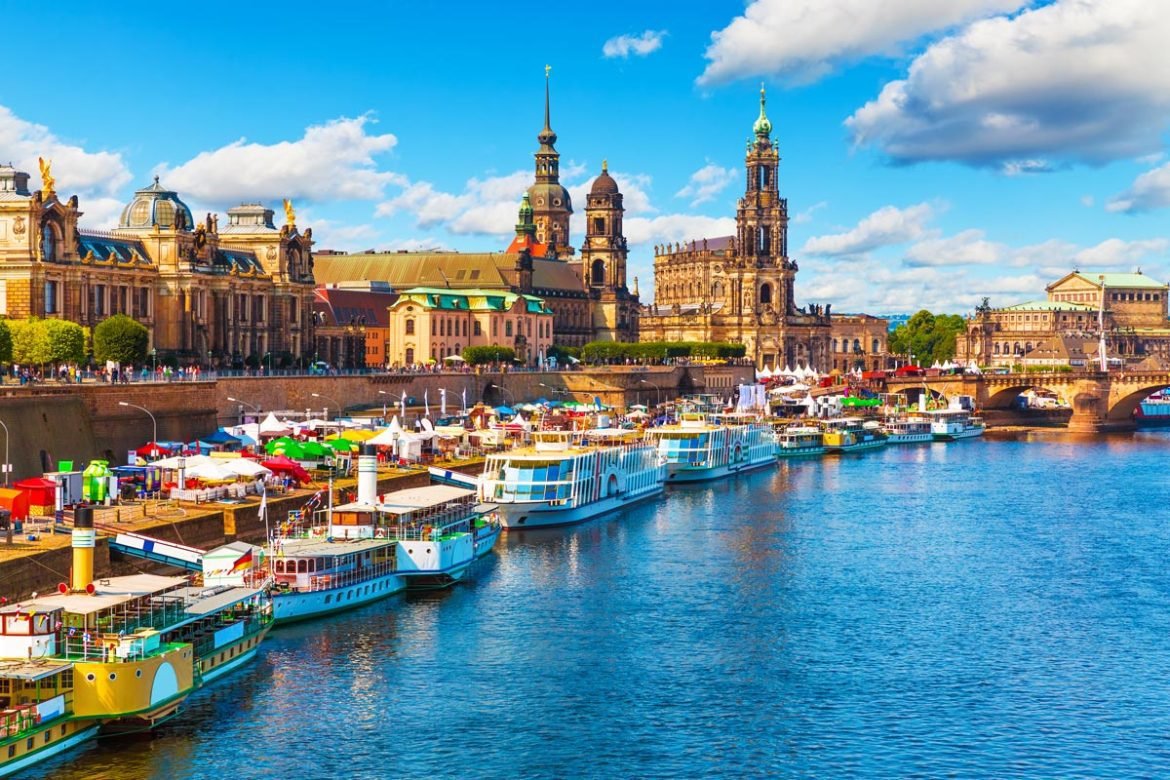Located in present-day eastern Germany close to the border with the Czech Republic, the city of Dresden is most well-known for being a target of Allied bombing during World War Two. Nearly 25,000 people perished in the 1945 inferno created by the British and American aerial bombing raid on the city of Dresden, which destroyed many of the city’s most prominent structures.
It took 60 years to meticulously rebuild the Old Town, with many of the city’s most recognizable structures being restored brick by brick. Throughout the 1990s, many of Dresden’s 500,000 residents volunteered their time to help restore the city by clearing the debris.
Dresden is now one of Germany’s top tourist sites, and the war’s effects are scarcely evident. The historic “Old Town” and the more modern “Neutstadt” (New Town), which is home to one of Eastern Germany’s liveliest nightlife scenes, are separated by the meandering River Elbe.
Must visit
Dresden’s Altstadt (Old Town) is located on the left side of the Elbe and is best experienced on foot. In the summer, the main square is filled with the sounds of classical music performed by some of the world’s best buskers.
It is hard to imagine that many of the stately structures you see as you stroll down the cobblestone streets adorned with Renaissance, Baroque, and 19th-century architecture are reproductions. Dresden’s Frauenkirche, a Lutheran church built in the 18th century, is one such landmark. It can be found in the heart of Altstadt.
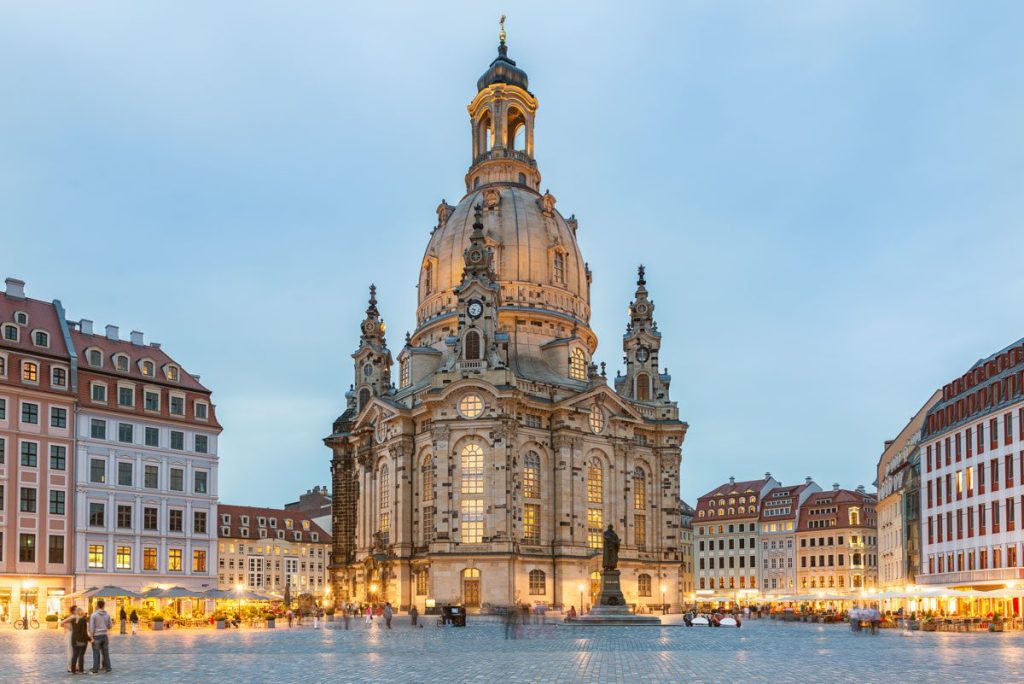
The Enchanting Beauty of Dresden, GermanyImage source: tichr/Shutterstock.com
Protestant sacred architecture at its best, the Church of Our Lady also has one of Europe’s biggest domes. The church’s dome was destroyed in 1945 due to bombing, and the remnants became a monument to the war’s victims for the next half century.
In 2005, after years of painstaking restoration utilizing 8,000 original stones, the Frauenkirche was returned to its former glory, serving as a symbol of peace between once-hostile countries.
A 101-meter-long painting representing the “Procession of Princes”—35 kings and queens from one of Saxony’s reigning families who ruled the region 800 years ago—can be seen just outside the Frauenkirche.
The mural depicts a dramatic and stirring scene from medieval Saxony and is made out of 25,000 Meissen porcelain tiles. While the mural was saved from direct bombardment, it did suffer smoke damage and required the replacement or repair of some 700 tiles.
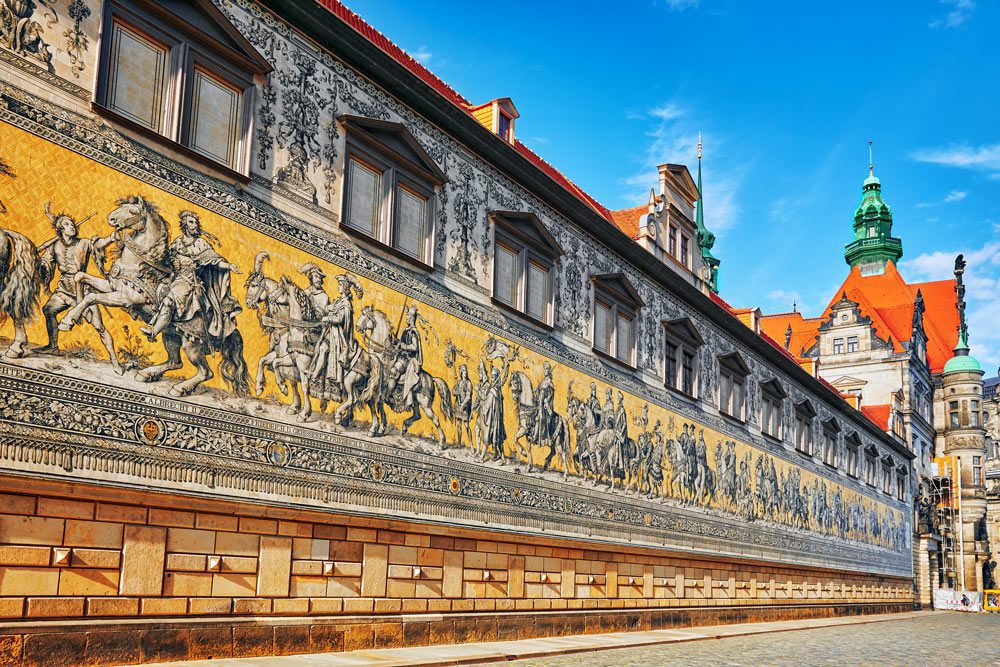
Georgentor and the Procession of Princes in Saxony, GermanyImage source: V_E/Shutterstock.com
One masterpiece of the present day stands out as an absolute must-see. The original courtyard of the Brühl’s Terrace building has been enclosed to create the massive Albertinum exhibition and function area. The New Masters Gallery and the Sculpture Collection are only two of the permanent exhibits in the museum.
Because of its massive size, the museum exudes an air of serene splendor throughout. Don’t miss out on the sculpture hall, which has a breathtaking exhibition of classical and contemporary works. If you arrive a few hours before closing, the museum can be empty.
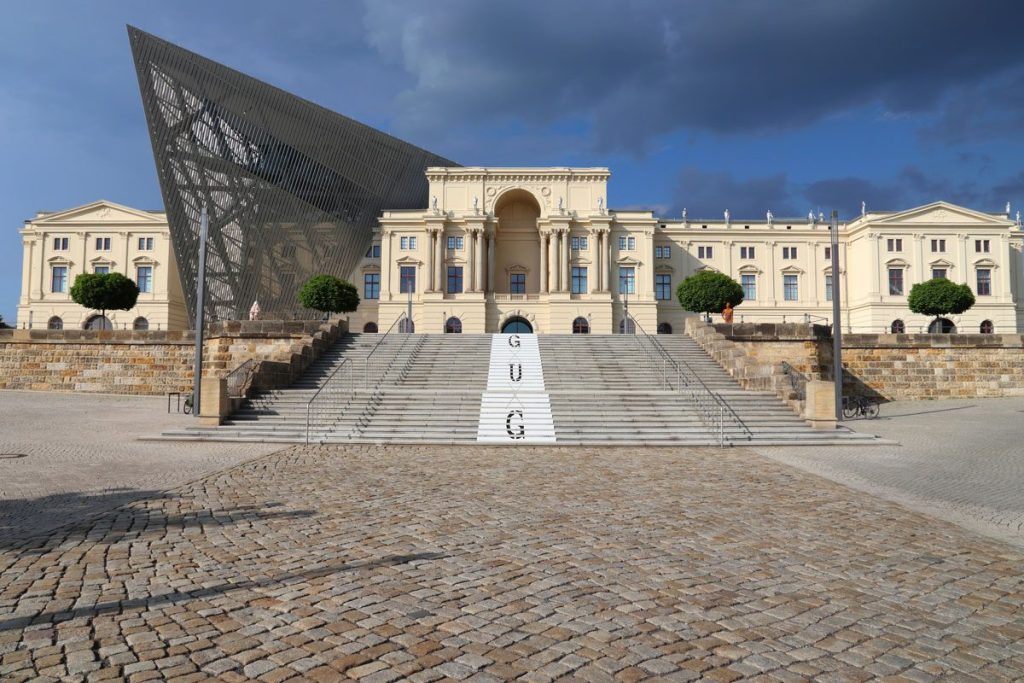
Bundeswehr Military History Museum in Dresden, GermanyImage source: Tupungato/Shutterstock.com
The Bundeswehr Military History Museum, which is located across the river, is also excellent. An old armory in the Albertstadt neighborhood displays objects from the German military’s first 700 years. The old structure has been modernized by attaching a spectacular glass arrowhead that serves as a gallery and viewing platform.
The crystal meth reportedly used by many German troops and the benzedrine used by the British army are only two examples of the museum’s frank exhibits on drug usage by both sides of the war. From elephants to carrier pigeons, every animal imaginable has been put to work in some capacity during the conflict, and their stories are told in an intriguing display.
Must go for gold
Elector of Saxony between 1694 and 1733, Augustus the Strong was one of Dresden’s most colorful historical personalities. Augustus’s moniker came from his impressive feats of strength, such as splitting an iron horseshoe in two.
Augustus the Strong was a flamboyant man who loved all things dazzling. As one of the world’s wealthiest kingdoms during the 12th and 16th centuries, Augustus amassed absurdly large hoards of gold and gemstones throughout this time.
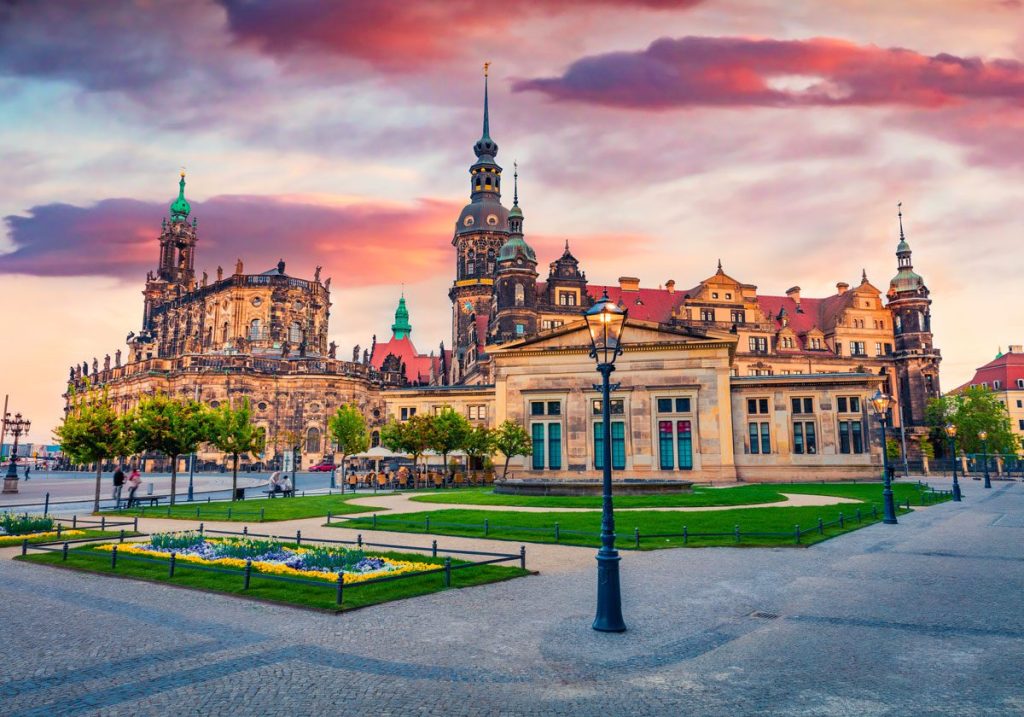
Evening View of Dresden Royal PalaceImage source: Andrew Mayovskyy/Shutterstock.com
The Residenzschloss (Royal Palace) is home to a sizable museum complex housing important pieces from this collection, including anything from Ottoman weaponry to drinking games from the 17th century.
The Green Vault, one of the museums, was established by Augustus the Strong and houses the continent’s biggest collection of artifacts. It’s difficult to fathom the vast quantity of gold, ivory, and precious stone ornaments.
Must question what you see
If you take a walk along the Elbe River, you could see a magnificent structure that looks like a mosque. This is Yenidze, a former tobacco factory decorated in an “Oriental” manner to emphasize the tobacco’s exotic origins. The lower floors are used as offices, while the ornamental dome is now a cafe.
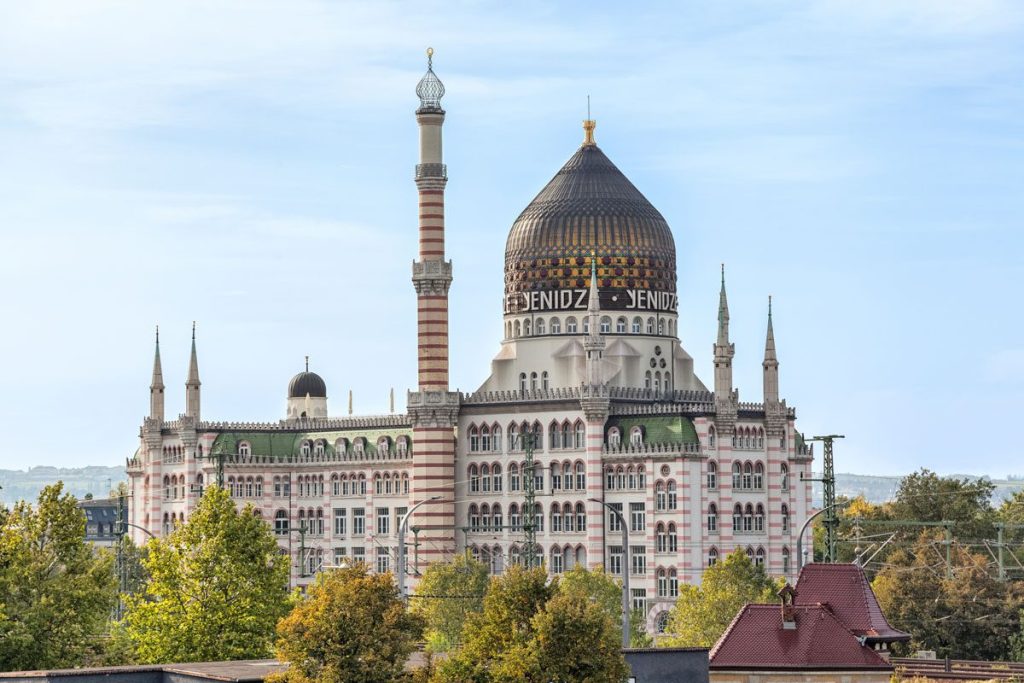
Yenidze – Former Tobacco Factory in Dresden, GermanyImage source: Sergey Dzyuba/Shutterstock.com
Must shop
Visit Outer Neustadt, where Louisenstrasse and Alaunstrasse intersect, to see the brightly colored buildings and painted murals. A plethora of unique boutiques offering apparel, accessories, and even swimwear are hidden away in the labyrinthine brightly painted courtyards.
Must eat and drink
You can enjoy a drink and some authentic German cuisine at Outer Neustadt. The mural-covered courtyard of Kunsthofpassage is home to Lila Sosse, where you can enjoy a variety of tasty German tapas. Taste the herring tartar with beetroot or the cheese spaetzle with fried onions.
Visiting Dresden without eating the traditional schnitzel would be a mistake. Visit Café Vis-á-Vis for a hearty serving of white asparagus with hollandaise sauce, served against the picturesque Elbe River.
Indulge your sweet craving at Camondas, a high-end chocolate store stocked with delectable chocolates, pralines, and specialty ice creams. You’ll be given a wicker basket to fill with chocolates of your choosing, and the kind staff will carefully package your selections for you
Must stay
Located in the heart of Old Town, the four-star Amedia Plaza Dresden offers luxurious accommodations, a unique design, and quick access to the airport via a 20-minute taxi ride.

Getting there
Unfortunately, you can’t fly directly from the UK to Dresden. Lufthansa, on the other hand, has many daily flights from London to Dresden via Munich and Frankfurt for as low as £200 one-way. It takes around 30 minutes to reach the city center by cab from the airport, or you can take the train from the airport to Dresden Hauptbahnhof.


